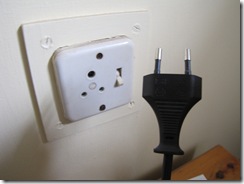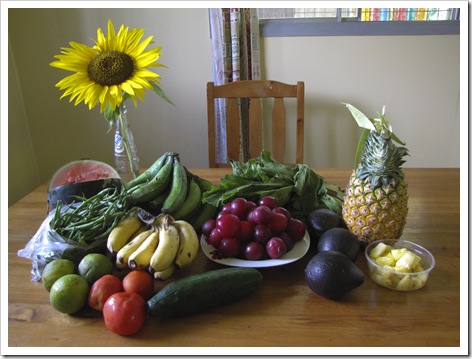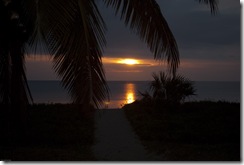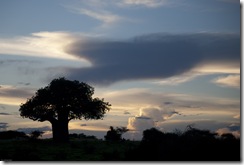This week we have a guest columnist with a story he would like to share with you. David Leonard Kabambo is currently a student at the College of African Wildlife Management but has previously worked extensively with children in need across Tanzania.
Nasra’s Wheel Chair
By David Leonard Kabambo
Article 23 of the Conventional on the Rights of a Child (CRC) states, “parties recognize that a mentally or physically disabled child should enjoy a full and decent life, in conditions that ensure dignity, promote self-reliance and facilitate the child’s active participation in the community.”
Every child has the right to grow up in a family environment where they are respected and have a chance to flourish. This doesn’t happen for all children.
Children, especially those with a disability, need moral support from the community and families. No one wants to be born with disability but it is not a choice we have to make. To discriminate against a child with a disability affects him/her psychologically. For those who are studying, this may cause them to drop out of school. Forms of discrimination against children with disabilities in school, continues to be a serious and pervasive social problem not just within the school but also in the community.
While I was training and learning about child protection and behavioral change at Kiberege Ward (a primary school in Tanzania), I saw a child wearing a school uniform crawling like a young baby who can’t yet walk. I was intrigued by this behavior and eager to get a chance to talk to her.
I soon got that chance. Her name is Nasra John Masanja. “I’m 11 years old, studying standard three at Kiberege Primary School. I was born with a physical disability. My leg has a problem so I can’t walk; I must crawl. My mother supports me by carrying me to and from school, but it is hard for her and sometimes she is late to pick me up. Sometimes I ask assistance from my fellow pupils to carry me home some pupils but some are mean when they see me crawling,” she told me.
After hearing her story I decided to find her mother. Majuma, her mother, explained to me, “Nasra was born at St. Francis Hospital in 1998 with a physical disability. The doctor tried to solve the problem, but failed because the bone of leg was so weak. My husband, after he saw her, complained, saying it was a bad omen and that the child would never be able help with anything at home.”
Majuma said she needed the assistance of a wheel chair in order to get Nasra to and from school. Carrying a child is hard work especially as the child grows and gains weight. While she could carry Nasra at the time, she though soon she would no longer be able to carry her daughter.
I was inspired by Nasra’s story and wanted to do something to help. I decided to help her get a wheel chair and I started to raise money. Nasra was astonished and very happy when I told her what I wanted to do. She broke into tears at the news; it was a dream comes true, from darkness into light, a sign of love, devotion and support extended by Tanzania Child and Youth Hope (a non-profit organization) to improve her life. I worked together with Tanzania Child and Youth Hope and after three months I finally had enough to purchase a wheel chair for Nasra.
When she received the wheel chair, Nasra started crying and said, “Oh My God! I wasn’t expecting in my life that one day I would have a wheel chair. I thank you and all those who contributed to getting the wheel chair. You all have such good hearts. The wheel chair will be a big help when it comes to getting around.”
I had another talk with Nasra’s mother. She was very moved by the help extended to her daughter, and wanted to say, “I’m so happy my daughter got a wheel chair. I have been experiencing such a hard time carrying her to and from school daily. Having a wheel chair will keep my daughter from being effected by as many air-borne and water-transmitted diseases that you are exposed to when you crawl. With this kind of environment, it is hard to avoid taking in dust and being contaminated with various germs. I thank Tanzania Child and Youth Hope for supporting my daughter with a wheel chair.”
I want to give another bunch of thanks to the head teacher of Signal Primary School, the place where Nasra is schooling, and to Tanzania Child and Youth Hope for extending so much help and support to Nasra. I also want to personally thank anyone who contributed money to purchase the wheel chair for Nasra, for the ‘move’ and in general, and for standing up for children’s rights.
Nasra is a one among many children living with disabilities in Tanzania. Most of the children like Nasra resemble her in their life stories and experiences. My wish is that we can work together give these children the help and support they need to live full lives. May we join hands in empowering children and make them realize their full potentials by realizing children’s rights and protect them.
Since 1991 the government has made much progress towards promoting and protecting the rights of children with disabilities. The government, in collaboration with non-governmental organizations (NGOs), have worked hard to improve the situation. However the government still has a long way to go toward fulfilling child rights. There are many children like Nasra that still need our help.
TOGETHER, WE CAN MAKE THE WORLD A BETTER PLACE FOR CHILDREN







